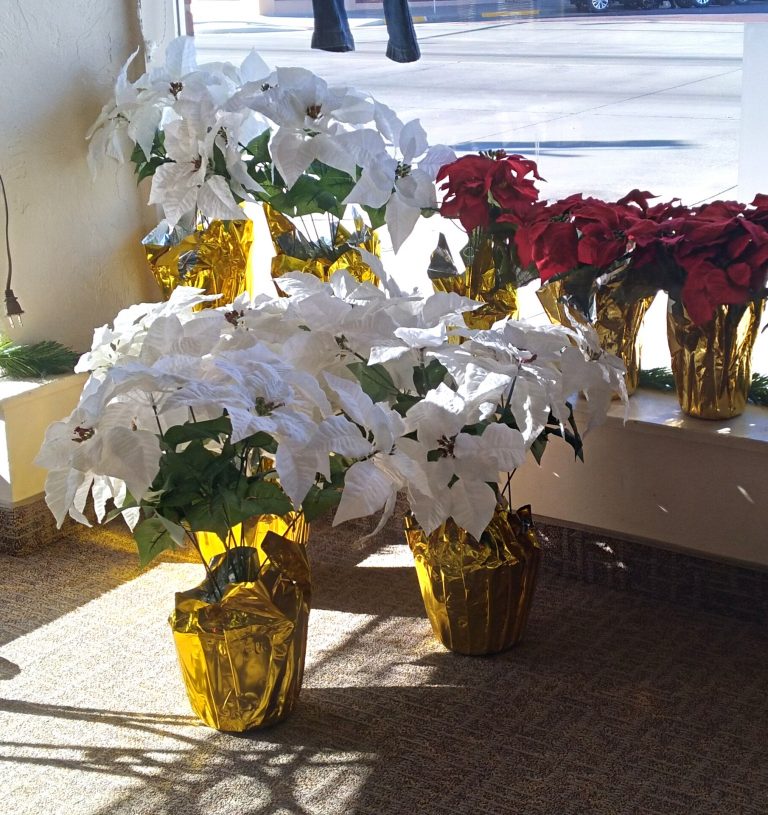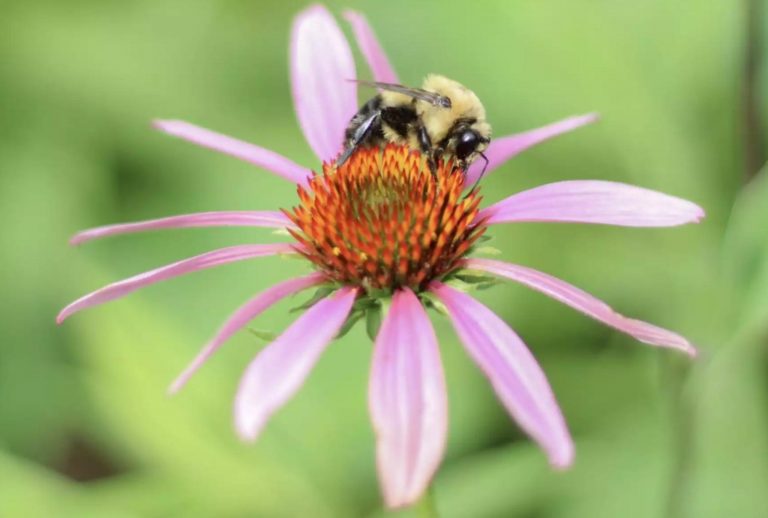By Chris Himmelwright
Pratt County Master Gardener
Pratt County Research and Extension Services
Choosing and Caring for Your Christmas Tree
If selecting a cut tree this year for Christmas, watch for these signs that the tree is too far gone. – Needles are a dull, grayish-green color – Needles fail to ooze pitch when broken apart and squeezed – Needles feel stiff and brittle – Needles pull easily off tree Once you have your tree home, recut the trunk about one inch above the original cut. This will open up clogged, water-conducting tissues. Immediately place the trunk in warm water.
Locate the tree in as cool a spot as possible. Avoid areas near fireplaces, wood-burning stoves and heat ducts as the heat will result in excess water loss. Make sure the reservoir stays filled. If the reservoir loses enough water that the bottom of the trunk is exposed, the trunk will need to be recut. Adding aspirins, copper pennies, soda pop, sugar and bleach to the water reservoir have not been shown to prolong the life of a tree.
If you choose a living Christmas tree, be sure to dig the planting hole before the ground freezes. Mulch the hole and backfill soil to keep them from freezing. Live trees should not be kept inside for more than three days. Longer periods may cause them to lose dormancy resulting in severe injury when planted outside. You may wish to tag the tree at the nursery and then pick it up a couple days before Christmas.
After Christmas, move the tree to an unheated garage for several days to acclimatize it to outside temperatures. After planting, water well and leave some mulch in place to prevent the soil water from freezing and becoming unavailable for plant uptake.
Care of Christmas and Thanksgiving Cacti
Christmas Cactus (Schlumbergera bridgesii) and Thanksgiving Cactus (Schlumbergera truncata) are epiphytes native to the jungles of South America. Epiphytic plants grow on other plants and use them for support but not for nutrients. Though these cacti are different species, they will hybridize and produce varying stem shapes. Christmas cactus normally has smooth stem segments, and Thanksgiving Cactus has hook-like appendages on each segment.
Both of these cacti prefer bright indirect light. Too much sun can result in the leaves turning yellow. Common household temperatures are fine. Soil should be kept constantly moist but not waterlogged. Give them a light fertilization every other week.
Blooming will normally cease in late winter to early spring, but continue to keep them moist and fertilized until fall. During the fall, stop fertilizing, and give the plants only enough water so the stems do not shrivel in order to encourage flower bud formation. Though these plants seem to flower best if kept a little pot bound, flowers will diminish if they are too crowded. If you haven’t repotted in several years, or if you notice a decrease in flowering from the previous year, move the plant to a larger pot in the spring.
If possible, move the plants outside for the summer. Choose a shady spot because these plants will not tolerate full sun. Leave the plants outside until frost threatens. Normally, the plants will have received enough cool nights in the 50- to 55-degree range that flower buds will have formed. However, if they haven’t, subjecting the plants to nights greater than 12 hours long and temperatures between 59 and 69 degrees can also generate flowers. Twenty-five consecutive long nights is enough for flower initiation. Place the plants in an unused room or cover them with a dark cloth or cardboard box to insure that they receive uninterrupted darkness. After the flower buds have formed, it takes an additional nine to 10 weeks for flowers to complete development and bloom.
Poinsettia Care
Modern poinsettia varieties stay attractive for a long time if given proper care. Place your poinsettia in a sunny window or the brightest area of the room, but don’t let it touch cold windowpanes. The day temperature should be 65 to 75 degrees F with 60 to 65 degrees at night. Temperatures above 75 degrees will shorten bloom life, and below 60 degrees may cause root rot. Move plants away from drafty windows at night or draw drapes between them to avoid damage from the cold.
Poinsettias are somewhat finicky in regard to soil moisture. Avoid overwatering because poinsettias do not like “wet feet.” On the other hand, if the plant is allowed to wilt, it will drop leaves. So how do you maintain proper moisture? Examine the potting soil daily by sticking your finger about one inch deep into the soil. If it is dry to this depth, the plant needs water. When it becomes dry to the touch, water the plant with lukewarm water until some water runs out of the drainage hole, then discard the drainage water.
Adapted from the Kansas State Horticulture Newsletter




